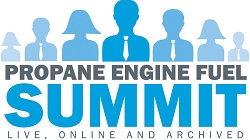 A proposed $2.2 billion, 750-mile long, high-voltage overhead transmission line could solve some of the issues of getting wind energy from the areas out west producing it to the areas in the east that need that power. This article from the Minneapolis Star Tribune says Clean Line Energy Partners’ idea is to build a line from the wind turbine farms of Kansas to Indiana, where it can be distributed to urban areas. But the project is meeting some resistance from farmers in the areas it would traverse.
A proposed $2.2 billion, 750-mile long, high-voltage overhead transmission line could solve some of the issues of getting wind energy from the areas out west producing it to the areas in the east that need that power. This article from the Minneapolis Star Tribune says Clean Line Energy Partners’ idea is to build a line from the wind turbine farms of Kansas to Indiana, where it can be distributed to urban areas. But the project is meeting some resistance from farmers in the areas it would traverse.
The idea is supported by environmental groups who say it is an opportunity to take a big step forward for an energy source that could reduce the nation’s reliance on fossil fuels and cut air pollution. Clean Line has four other transmission line projects in the works in the West and Midwest.
Clean Line says the project will be an economic boon, with all four states seeing new jobs for construction and local companies providing things like parts and concrete. Lawlor said consumers would benefit, too, by the new source of power that would drive down electricity costs.
Yet many landowners have organized in opposition to Clean Line. They worry about whether the towers and lines will reduce property values, get in the way of farming operations like crop-dusting and irrigation, and even create health risks for those living so close to high-voltage wires.
“This is some of our best ground,” said Kent Dye, 56, who farms about 7,000 acres in northeast Missouri’s Monroe County. “This line — there’s no proven need for it. There are no contracts to provide power, no contracts to sell on the other end.”
Clean Line officials believe that after they have a chance to talk to the farmers and ranchers who have concerns, they’ll be able to convince them of the benefits of easements they can collect money on and the long-term environmental benefits for everyone.










